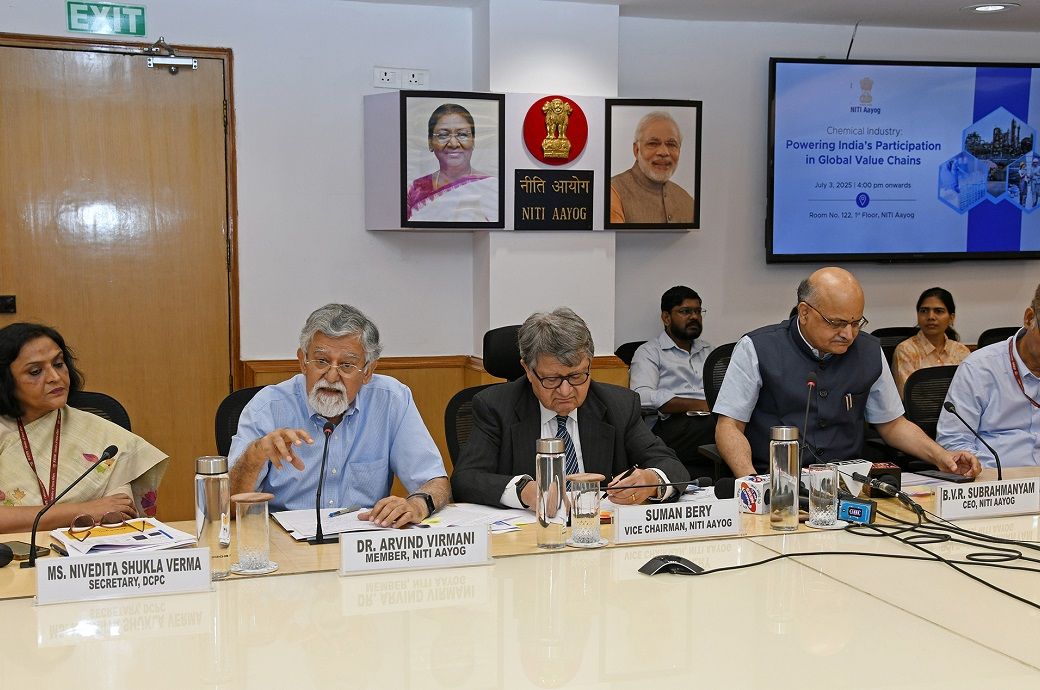
India’s 3.5 per cent GVC share and $31 billion trade deficit in 2023 underscore its dependence on imported feedstock and specialty chemicals. However, with targeted fiscal and non-fiscal reforms, India aims to build a $1 trillion chemical industry and emerge as a global powerhouse, as outlined in NITI Aayog’s latest report ‘Chemical Industry: Powering India’s Participation in Global Value Chains.’
The report provided an in-depth analysis of the sector, highlighting opportunities, challenges, and a strategic roadmap to strengthen India’s position in global markets. Structural issues such as heavy import reliance—stemming from limited domestic backward integration—outdated industrial clusters, and high logistics costs have reduced global competitiveness.
Low investment in R&D—only 0.7 per cent compared to the global average of 2.3 per cent—further hampers innovation in high-value chemicals. Regulatory delays, particularly in environmental clearances, restrict industrial agility.
Moreover, the sector faced a 30 per cent shortfall in skilled professionals, especially in areas like green chemistry, nanotechnology, and process safety. To address these issues, the report recommended several strategic interventions: establishing world-class chemical hubs by upgrading existing clusters and creating new ones; enhancing port infrastructure with a dedicated Chemical Committee; and introducing an Opex subsidy scheme to promote domestic production of high-dependence or high-export-potential chemicals, NITI Aayog said in a press release.
Advancing R&D through increased funding, industry-academia collaboration, and global technology partnerships is emphasised, alongside fast-tracking environmental clearances via a DPIIT audit committee to improve transparency and accountability.
The report also suggested leveraging Free Trade Agreements (FTAs) by including chemical-specific provisions and improving exporter awareness and utilisation. Talent development is another core pillar, with proposals to expand ITIs, upskill faculty, and strengthen industry-academia linkages to align training with evolving sectoral needs.
The vision for 2030 is for India to become a global chemical manufacturing powerhouse with a 5–6 per cent GVC share, doubling current production and reducing the trade deficit to achieve a net zero balance in chemicals.
This growth is expected to generate an additional $35–40 billion in exports and around 7 lakh skilled jobs. India’s rise in the global chemical sector will be driven by advanced technology adoption, streamlined regulations, modern infrastructure, and a skilled workforce.
The report concluded that realising this potential will require coordinated efforts from the central and state governments, along with proactive industry participation, to build a competitive, investment-ready, and globally integrated chemical industry.
ALCHEMPro News Desk (SG)
Receive daily prices and market insights straight to your inbox. Subscribe to AlchemPro Weekly!